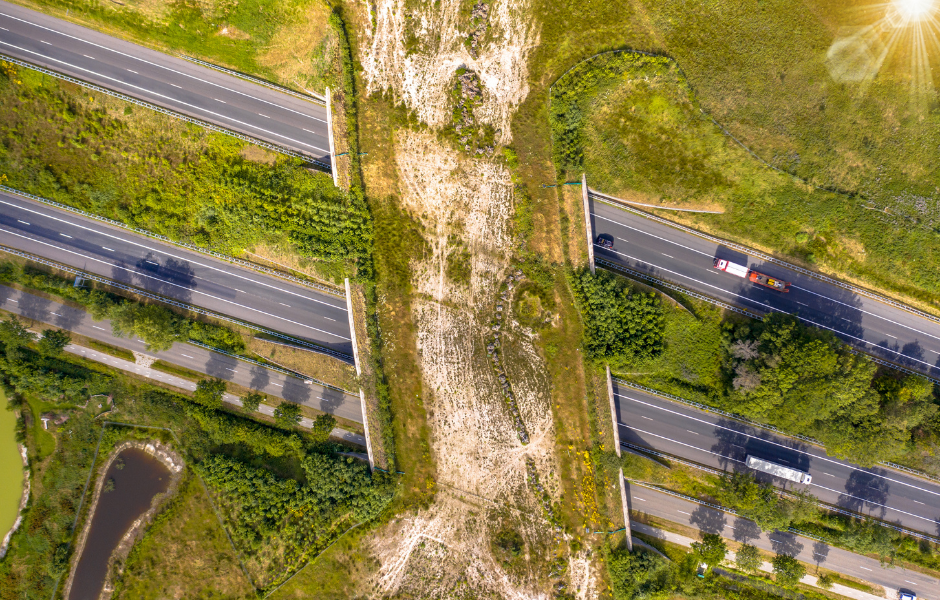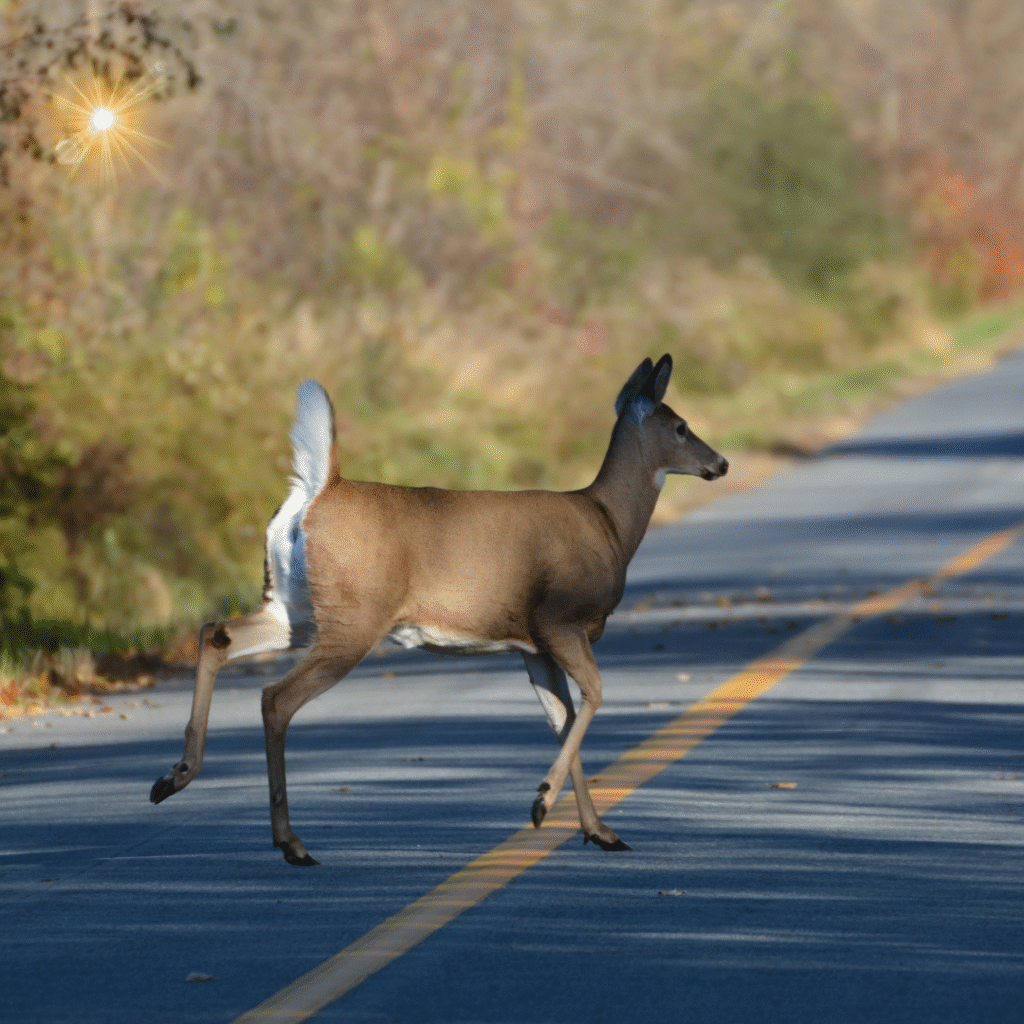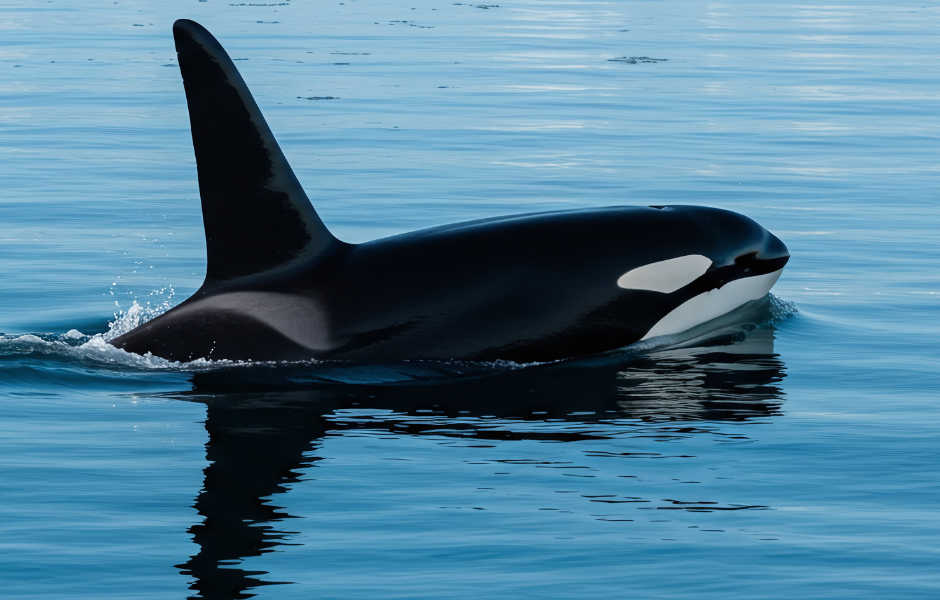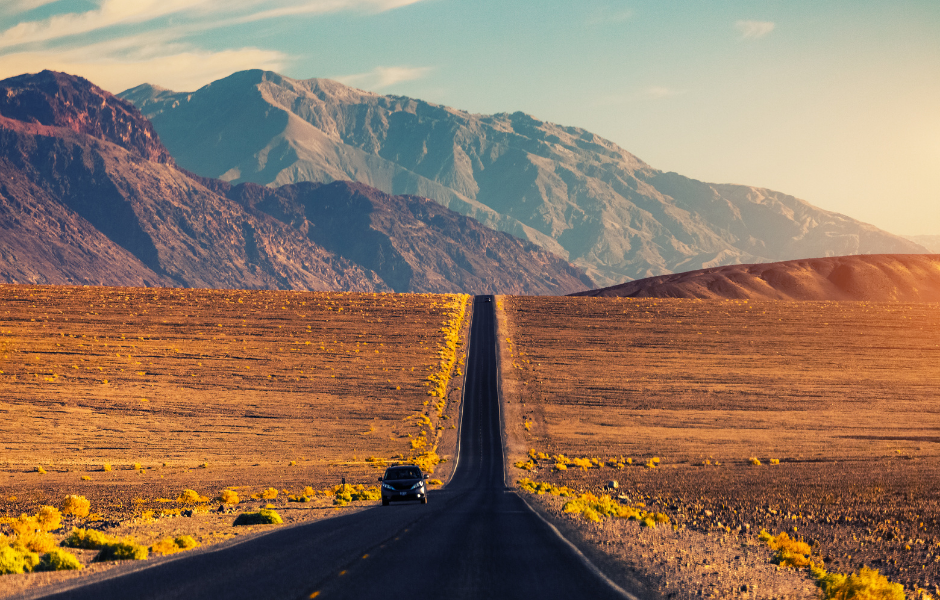
This children’s article, Amazing animal bridges: Helping wildlife cross safely, has been written for native English speakers and learners of English as a second or foreign language. It helps children build vocabulary, discover real-life nature solutions, and learn about how people are helping animals around the world. Written by Mark Pulley, an experienced teacher and writer.
Why do we need animal bridges?
Roads and railways cut through forests, grasslands, and other habitats. When animals try to cross, they risk being hit by cars or trapped in small areas. That’s why people build animal bridges, special crossings just for animals!
These structures help creatures move safely, find food, and meet other animals to have babies.
Amazing examples around the world
Banff National Park, Canada, has six overpasses and 38 underpasses. These have been used by bears, wolves, elk, moose, deer, and more—over 150,000 times in 20 years, cutting road deaths by 80%.
Christmas Island, Australia, built a 16-foot-high bridge and dozens of tunnels for millions of red crabs during their annual migration to the sea.
In the Netherlands, there are more than 600 wildlife bridges, including the world’s longest ecoduct (over 800 metres long!), used by deer, badgers, boar, and more.
Banff’s crossings alone have reduced animal–vehicle crashes by 80%, saving both wildlife and human lives.
Los Angeles is building the Wallis Annenberg wildlife crossing (210 feet long and 174 feet wide) to help mountain lions, bobcats, deer, lizards, snakes, and even frogs cross safely over a busy freeway.
Who uses these bridges?
Lots of different animals use these special bridges, and it’s not just the big, famous ones! It’s common to spot large mammals like bears, wolves, deer, and moose taking a safe stroll across a bridge. In some places, tigers, elephants, and mountain lions have been caught sneaking across too!
But it’s not only the giants—small mammals like squirrels, badgers, and foxes love using these paths too. And guess what? There are even bridges designed for turtles and crabs to get in on the action, crossing busy roads without a worry.
What’s next?
Thousands of wildlife crossings now exist worldwide, and that number keeps growing. Engineers and conservationists are working on new bridges and tunnels in places like India, Australia, Kenya, and the United States.
These bridges don’t just save lives, they help animals find new homes, maintain healthy populations, and balance ecosystems. It’s nature and engineering working together to give wildlife a safer future.

Article vocabulary list
- Wildlife – Animals and plants living in nature
- Overpass / underpass – A bridge (over) or tunnel (under) built so people or animals can cross safely
- Migration – A journey animals make to find food, breed, or live in a better place
- Ecoduct – A wildlife bridge covered with soil and plants to look like a natural habitat
- Habitat – The natural home where an animal or plant lives
- Conservationists – People who work to protect animals, plants, and the environment
Comprehension questions
Just click the plus (+) to see the answer
1. What is the main purpose of wildlife bridges?
a) To show off fancy engineering
b) To allow animals to cross roads safely
c) To let cars drive faster
Answer: b) To allow animals to cross safely over roads
2. Which place has seen 150,000 uses of animal crossings in 20 years?
a) Christmas Island
b) Banff National Park
c) Los Angeles
Answer: b) Banff National Park
3. Why do red crabs need special bridges on Christmas Island?
a) To cross busy roads during migration
b) They are afraid of heights
c) To play soccer
Answer: a) To cross busy roads during migration
4. What is the word for a bridge covered in plants for animals?
a) Overpass
b) Tunnel
c) Ecoduct
Answer: c) Ecoduct
5. Name one benefit of wildlife bridges besides saving animal lives.
a) They make traffic lights work faster
b) They help animals find new homes
c) They give animals exercise
Answer: b) They help animals find new homes

Mark is a writer and EFL teacher from England with eight years’ experience. He’s passionate about travel, sport (especially football), animals, nature, and history, and enjoys helping children explore the world through language and learning.




